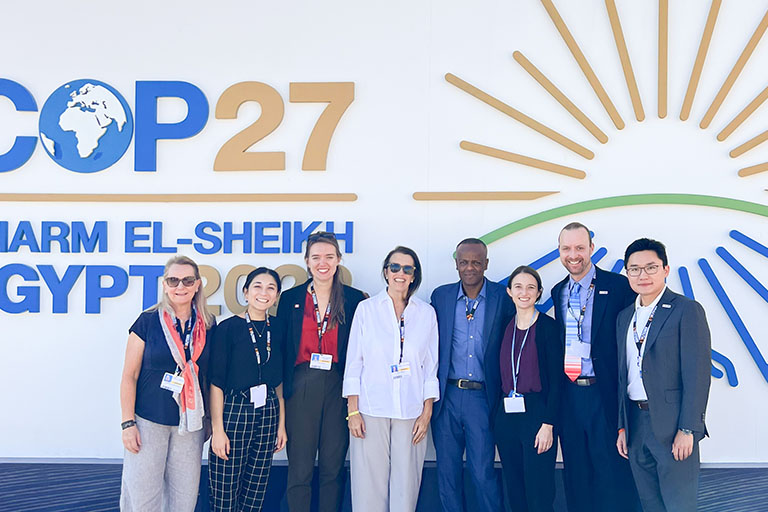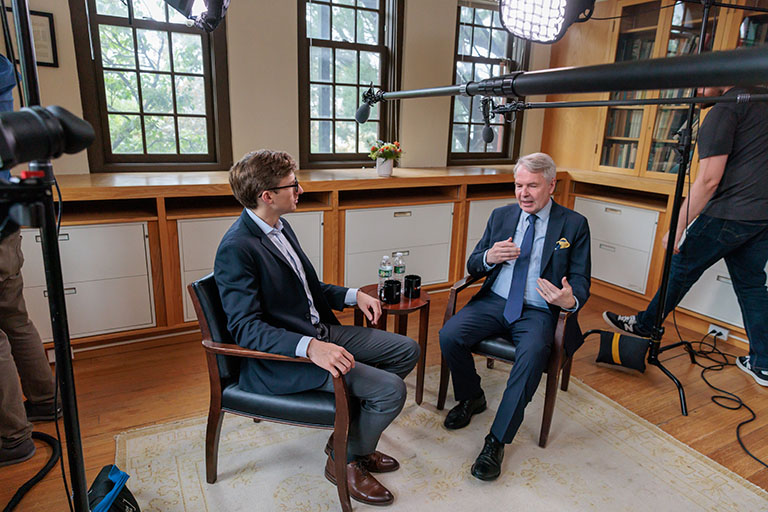-

Hear from Professor Monica Toft
Learn how Professor Monica Toft is shaping the study of global affairs and diplomacy at Fletcher.
Hear from Prof. Toft -

Explore Fletcher academics in action
Fletcher Features offers insights, innovation, stories and expertise by scholars.
Get global insights -
Get application tips right from the source
Learn tips, tricks, and behind-the-scenes insights on applying to Fletcher from our admissions counselors.
Hear from Admissions -

Research that the world is talking about
Stay up to date on the latest research, innovation, and thought leadership from our newsroom.
Stay informed -
Meet Fletcherites and their stories
Get to know our vibrant community through news stories highlighting faculty, students, and alumni.
Meet Fletcherites -

Forge your future after Fletcher
Watch to see how Fletcher prepares global thinkers for success across industries.
See the impact -

Global insights and expertise, on demand.
Need a global affairs expert for a timely and insightful take? Fletcher faculty are available for media inquiries.
Get in Touch
Exploring the Flipside
Karen Jacobsen investigates human mobility from a different point of view

If you take a class with Karen Jacobsen, she might give you this pop quiz: What percentage of the world’s population are international migrants?
"People almost always overestimate by orders of magnitude,” said Jacobsen. While many believe the figure to be 30%, the number is actually 3.6%, a proportion that has increased only slightly since 1900 (but of course the actual number has greatly increased: around 281 million people live in countries not of their birth).
“For a long time—and still today—most of the world’s population has stayed put, but we only focus on the migrants. It’s really interesting to think about the flipside—who isn’t moving, and how do they relate to the people who move?”
Karen Jacobsen, the Henry J. Leir Professor in Global Migration, is always asking students to see things from a different angle. She invites Rocky Weitz to her classes, and he turns the globe on its side so students view the Arctic Circle head-on. In her research, Jacobsen explores migration but is as interested by those who decide not to move or cannot do so.
Working both at the Leir Institute for Migration and Human Security and the Center for International Environment and Resource Policy, Jacobsen investigates the lived impact of migration on human lives. Currently, she’s planning a new study, in collaboration with other faculty including Weitz, to understand the human impact of Arctic ice melt. When she started her migration research in the 1990s, she says, there were predictions that by 2020, more than 100 million people would be displaced by climate change.
“That is probably how many people will be affected by climate change, but not how many will move,” said Jacobsen. “People need resources to move.”
For example, in the case of Hurricane Katrina, not everyone left New Orleans. Many couldn’t abandon their homes because they lacked the resources to move. Others wouldn’t leave because of place attachment—wanting to stay at home for all kinds of reasons. Jacobsen is similarly interested in how place attachment will play out for indigenous and other people living in the Arctic Circle. Some people will move, but not everyone will. Immobility is as important to explore as mobility. With forecasts that we will overshoot our greenhouse gas emissions targets, she wants to explore and understand the effect of global warming on human lives.
Jacobsen’s interest is partly personal. She was a student in South Africa during the apartheid era, and she left the country to work as a journalist in Africa, living in Zambia and then the United Kingdom. She hadn’t intended to go into academia, initially moving to the US to work on a cattle ranch in Wyoming. Then, in a course on migration during her PhD at MIT, she was drawn to questions of mobility.
“I think one of the most interesting things to study is why people move, who does and who doesn’t, and what happens to them,” she said. “The study of migration teaches us about geography, history, politics, and identity. The lens of migration is a wonderful way to look at and understand the world.”
Finding new perspectives and points of entry is a feature of Jacobsen’s work. As the founder and director of the Refugees in Towns (RIT) project, she brings this philosophy to the project’s methodology. Now in its sixth year, RIT has published over 50 case reports written by refugees about their experiences. Fletcher students help contributors write their reports, but the cases are led by the refugees themselves. While these accounts have been helpful in collecting more qualitative data about the experience of refugees and other migrants, Jacobsen also wants the refugee researchers to have immediate benefits.
“We ask refugees to write their own research report and tell their own story—we support them rather than them supporting us. So much research about refugees starts with a western, usually white, researcher based in a rich European or North American country. We want to help turn this around,” said Jacobsen.
She’s heard from RIT refugee researchers that their RIT publications have helped them gain admission to degree programs or find a new job. Instead of sending and paying external researchers to learn about the refugee experience from the outside, RIT partners directly with refugees and learns from and pays them directly.
“The traditional model of doing research in developing countries is about white people going there and trying to get local people to participate in their research project,” said Jacobsen. “While such research is fine, and I do it myself, I’m interested in trying to change the whole angle.”
Read more about the Leir Institute's Refugees in Towns project.

